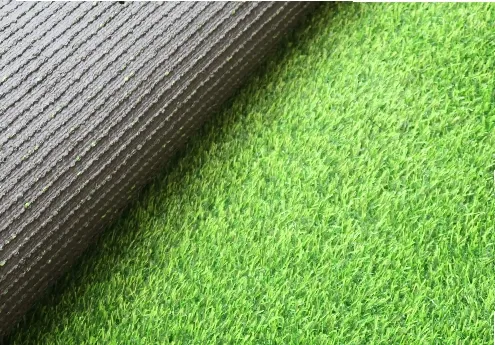
- Afrikaans
- Arabic
- Belarusian
- Bengali
- Czech
- Danish
- Dutch
- English
- Esperanto
- Estonian
- Finnish
- French
- German
- Greek
- Hindi
- Hungarian
- Icelandic
- Indonesian
- irish
- Italian
- Japanese
- kazakh
- Rwandese
- Korean
- Kyrgyz
- Lao
- Latin
- Latvian
- Malay
- Mongolian
- Myanmar
- Norwegian
- Persian
- Polish
- Portuguese
- Romanian
- Russian
- Serbian
- Spanish
- Swedish
- Tagalog
- Tajik
- Thai
- Turkish
- Turkmen
- Ukrainian
- Urdu
- Uighur
- Uzbek
- Vietnamese
Exploring the Benefits and Uses of Artificial Turf for Modern Landscaping Solutions
Nov . 18, 2024 20:51 Back to list
The Rise of Fake Turf Grass A Sustainable Solution for Modern Landscapes
As cities expand and environmental concerns escalate, the importance of sustainable solutions for landscaping has become more pronounced. One such solution that has seen a meteoric rise is fake turf grass, a synthetic alternative to natural grass. With its ability to survive various climatic conditions while requiring minimal maintenance, fake turf grass offers a practical approach to landscaping that is gaining popularity across various sectors.
Understanding Fake Turf Grass
Fake turf grass, often referred to as artificial turf or synthetic grass, is made from synthetic fibers designed to mimic the appearance and feel of natural grass. Initially used primarily in sports fields and playgrounds, advancements in technology have led to the development of realistic-looking turf that is suitable for residential lawns, commercial landscaping, and even indoor spaces.
One of the primary advantages of fake turf grass is its durability. Unlike natural grass, which can become brown and patchy due to drought or heavy foot traffic, synthetic turf maintains its vibrant color and texture year-round. This resilience makes it especially appealing for high-traffic areas, such as sports stadiums and public parks, where maintaining a pristine appearance is crucial.
Environmental Benefits
Those concerned about environmental issues often find the idea of fake turf grass controversial. However, a closer look reveals several environmental benefits. For starters, fake turf does not require water for irrigation. In regions prone to drought, this can significantly reduce water consumption, thereby conserving a precious resource. Additionally, synthetic grass eliminates the need for fertilizers and pesticides, which can be harmful to local ecosystems.
Moreover, installing fake turf can lead to a reduction in lawn care emissions. Traditional lawn maintenance involves frequent mowing, which not only consumes fossil fuels but also contributes to air pollution. By switching to synthetic turf, homeowners can minimize their carbon footprint while still enjoying a beautiful green space.
Maintenance and Practicality
fake turf grass

One of the strongest selling points of fake turf grass is its low maintenance requirements. Natural lawns demand regular mowing, watering, and fertilizing, all of which can consume both time and resources. In contrast, synthetic grass requires minimal upkeep. A simple rinse with water, occasional brushing, and the removal of debris are usually all that is needed to keep it looking fresh.
This practicality makes fake turf an excellent choice for busy families, elderly homeowners, or anyone looking to reduce the hassle of lawn care. Furthermore, it offers a solution for owners of properties located in regions where natural grass struggles to thrive due to harsh weather conditions.
Applications and Versatility
Fake turf grass is incredibly versatile and can be used in various applications beyond sports fields. Residential homeowners increasingly choose synthetic grass for backyards, front lawns, and pet areas. Its durability makes it perfect for pet owners, as it is resistant to digging and cannot be easily damaged by pet waste. Many manufacturers also create turf varieties specifically designed to combat odors and stains from pets.
Commercial properties, including hotels, restaurants, and retail spaces, also find great aesthetic value in synthetic grass. Businesses can create inviting outdoor spaces that require minimal upkeep, enhancing their appeal without the burden of constant maintenance.
Conclusion
The rapid rise of fake turf grass signifies a shift towards more sustainable landscaping practices. While it may not be suitable for every application, its numerous benefits cannot be ignored. From conserving water resources and reducing the need for harmful chemicals to offering practical solutions for busy lifestyles, synthetic turf grass represents a modern approach to landscaping that aligns with the environmental values of today’s society.
As we continue to seek eco-friendly solutions in our daily lives, fake turf grass shows no signs of losing its popularity. Rather, it stands as a testament to innovation in landscaping—providing beauty, durability, and sustainability in an ever-changing world. Whether for homes, parks, or commercial properties, the transition to synthetic grass could very well pave the way for smarter and greener living environments in the future.
-
The Benefits of Artificial Turf for Indoors
NewsJul.15,2025
-
How Artificial Grass Suppliers Ensure Quality Products
NewsJul.15,2025
-
Artificial Grass and Pets: A Space for Relaxation
NewsJul.08,2025
-
Balcony & Outdoor Decoration with Artificial Grass
NewsJul.08,2025
-
Best Indoor Artificial Grass for Home
NewsJul.07,2025
-
Best Pet Turf for Dogs: Safe & Durable Artificial Grass Options
NewsJul.07,2025
Products categories









